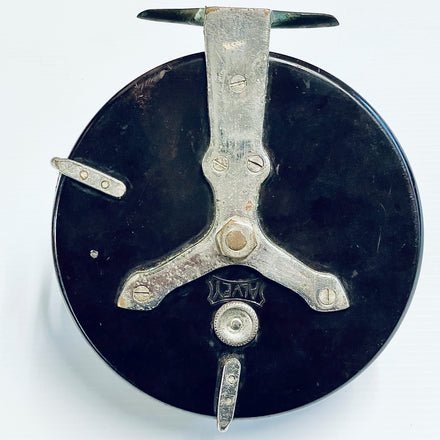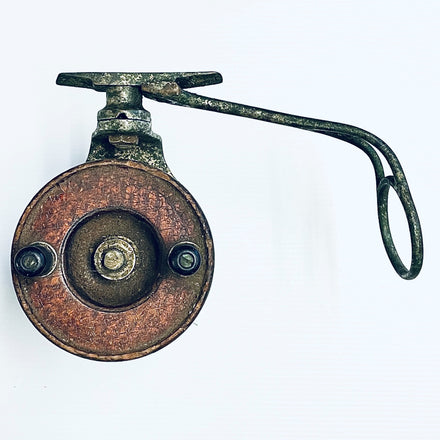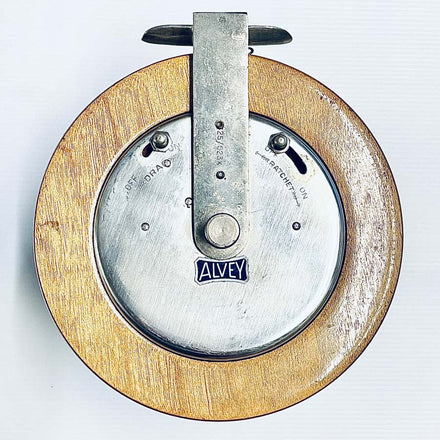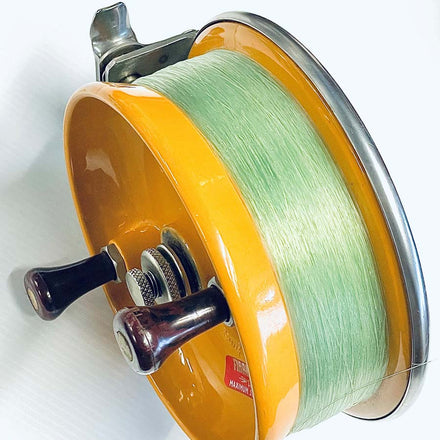
1920
Charles Alvey used a treadle lathe to turn Silky Oak for the back and spool of the first 3″ and 4″ diameter reels. The back support, line guide and ratchet parts were hand filled from cast gunmetal.

1925
Ken Alvey formed a partnership with his father Charles. Increased demand led to the acquisition of a Capstan lathe which was powered by a kerosene engine. Full backs of Cast Gunmetal were now machined, as were brass spindles and nuts.

1930
Rose wood and Red Bean timbers were used to make the spools. A brass plate was screwed to the spools of the 5″ side cast, and the 5″, 6″ and 7″ game fishing reels to increase line capacity. Bermabrite, an aluminium alloy was used for the 7″ overhead game reels.

1936
Bakelite, a thermosetting plastic was used to mould 3″ and 4″ diameter spools. Some 4″ backs were also moulded.

1960
Marine grade Maple Bondwood was used for the larger boat reels up to 12″ diameter spools.

1965
The gunmetal supports on the stainless steel back were replaced by stainless steel supports which were spot welded to the backs.

1970
With the acquisition of several 100 ton compression moulders, spools could be manufactured from Phenolic Resin and Fibreglass.

1974
As a result of the damage caused by the Brisbane River flood, wooden spools ceased to be manufactured. A new material mix of polyester and fibreglass replaced the use of cedar.
Gowings Whale Trust
We can't thrive unless our oceans do - and that's why 1% of all sales goes to ocean conservation
The Humpback delights coastal dwellers with its acrobatics as it makes its way through Australian waters and by increasing our understanding of this mammal, its environment and the impact man has upon it, we will have a greater chance of ensuring its survival.
100% of profits into the Trust are used to create informative content and fund direct action, education and research projects, partnering and collaborating with like-minded organisations towards the goal of protecting and preserving our oceans and marine life.
You can buy any of the featured merchandise or make a tax deductible donation and receive your Whale Future certificate here.

